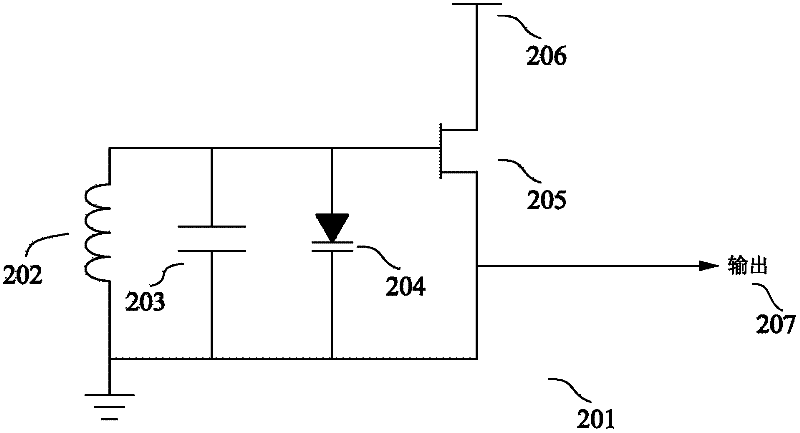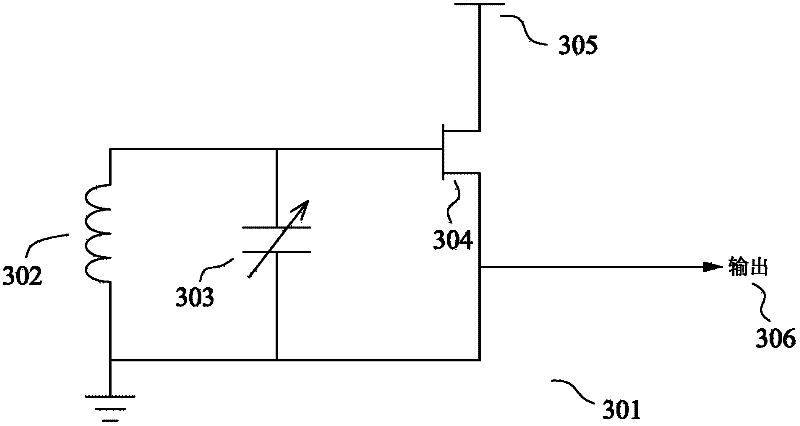Lc oscillator
A technology of oscillators and capacitors, applied in power oscillators, automatic power control, electric discontinuous tuning, etc., can solve the problems of digital control linearity without oscillators, inability to achieve, and small unit capacitor size.
- Summary
- Abstract
- Description
- Claims
- Application Information
AI Technical Summary
Problems solved by technology
Method used
Image
Examples
Embodiment Construction
[0025] An oscillator capable of generating signals having different frequencies within a predetermined frequency range may include capacitive elements and inductive elements. The capacitive element may include more than two capacitor arrays. Each array may include one or more capacitors switchably connected in parallel with the inductive element to control the frequency of the output signal. One of the capacitive arrays may be connected to only a part of the inductive element so that it sees a smaller inductance than the other array. Since the effect of a particular capacitance on the output frequency depends on the inductance it is connected to, connecting the array to only a portion of the inductance can be used to increase the size of the capacitance required to achieve a particular frequency step. This is because a capacitor connected to only a portion of the inductance produces less frequency variation in the output signal than if the capacitor had been connected to the ...
PUM
 Login to View More
Login to View More Abstract
Description
Claims
Application Information
 Login to View More
Login to View More - R&D
- Intellectual Property
- Life Sciences
- Materials
- Tech Scout
- Unparalleled Data Quality
- Higher Quality Content
- 60% Fewer Hallucinations
Browse by: Latest US Patents, China's latest patents, Technical Efficacy Thesaurus, Application Domain, Technology Topic, Popular Technical Reports.
© 2025 PatSnap. All rights reserved.Legal|Privacy policy|Modern Slavery Act Transparency Statement|Sitemap|About US| Contact US: help@patsnap.com



